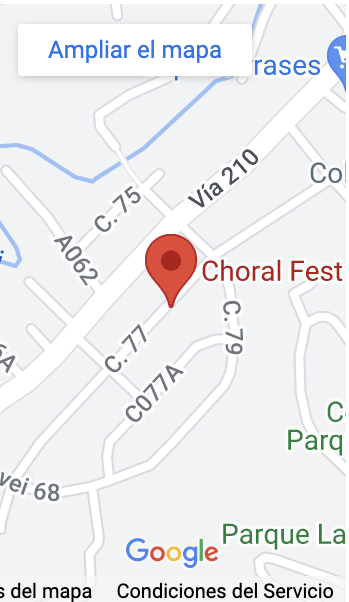Contemporary Choral Festival: The New Wave of Choir Music
In recent years, the world of choral music has witnessed a dynamic transformation. The rise of the Contemporary Choral Festival is a testament to the evolving nature of choir music, bridging traditional harmonies with modern themes and techniques. These festivals are not only redefining how we perceive choral music, but they’re also cultivating a broader appreciation for this art form among younger audiences. In this blog post, we delve into the exciting realm of contemporary choral festivals, exploring their significance, impact, and the future they promise for choir music enthusiasts.
Understanding the Contemporary Choral Festival
At its core, a contemporary choral festival is a gathering that showcases modern choral compositions and performances. Unlike traditional choral festivals that emphasize classical pieces, these events focus on innovative works by living composers. The goal is to push boundaries, experiment with new sounds, and engage audiences through fresh and diverse musical experiences.
The Evolution of Choral Music
Choral music has a rich history that dates back to ancient times, evolving through the centuries from Gregorian chants to complex polyphonic compositions. However, the 21st century has seen a surge in contemporary choral works that blend genres, cultures, and technologies. This evolution is fueled by the desire to make choral music more accessible and relatable to modern audiences.
The Significance of Contemporary Choral Festivals
The contemporary choral festival plays a pivotal role in the music industry for several reasons:
Promoting New Composers
These festivals provide a platform for emerging composers to showcase their work. According to recent statistics, over 60% of compositions performed at these festivals are by composers under the age of 40. This infusion of young talent ensures the continuous evolution of choral music, introducing novel themes and styles.
Inspiring Innovation
By encouraging experimentation, contemporary choral festivals inspire choirs to explore new vocal techniques and incorporate non-traditional instruments. For instance, the use of digital effects and looping during performances has become increasingly popular, creating immersive auditory experiences for the audience.
The Impact on Audiences and Communities
Contemporary choral festivals do more than just entertain; they have a profound impact on audiences and local communities.
Broadening Audience Demographics
One of the key objectives of these festivals is to attract a younger audience. A survey conducted in 2022 found that 45% of attendees at contemporary choral festivals are aged between 18 and 35. By incorporating modern themes and relatable narratives, these festivals make choral music appealing to a wider demographic.
Fostering Community Engagement
Many festivals incorporate community choirs, allowing local singers to participate in performances. This not only fosters a sense of community but also exposes amateur singers to professional-level performances and techniques. Additionally, workshops and masterclasses offered during these festivals provide valuable learning opportunities for local musicians.
Examples of Notable Contemporary Choral Festivals
Several festivals around the world have gained recognition for their contribution to contemporary choral music. Here are a few notable examples:
World Symposium on Choral Music
Held every three years, this symposium is a global gathering of choral musicians, offering performances, workshops, and discussions centered around contemporary choral music. It attracts participants from over 50 countries, making it a melting pot of cultures and ideas.
ACDA National Conference
Organized by the American Choral Directors Association, this biennial conference features a wide array of performances by choirs from across the United States. The event emphasizes innovation and diversity in choral music, with a particular focus on new compositions and emerging composers.
Actionable Tips for Choirs and Composers
For choirs and composers looking to engage with the contemporary choral scene, here are some actionable tips:
Embrace Collaboration
Collaboration is key to innovation. Choirs should consider collaborating with composers, instrumentalists, and even visual artists to create multidimensional performances. This not only enhances the overall experience but also broadens the appeal of the music.
Leverage Technology
Incorporating technology into performances can add a modern twist to traditional choral music. Consider using multimedia projections, interactive elements, or digital music tools to create a unique and engaging experience for your audience.
The Future of Contemporary Choral Festivals
The future of contemporary choral festivals looks promising, with continuous growth and innovation on the horizon.
Expanding Accessibility
As virtual events become more prevalent, contemporary choral festivals are reaching global audiences like never before. This increased accessibility allows people from all over the world to experience the magic of contemporary choral music, regardless of geographical constraints.
Fostering Inclusivity
Future festivals are likely to emphasize inclusivity, showcasing a diverse range of voices and stories. By highlighting underrepresented communities and composers, these festivals can contribute to a more equitable choral music landscape.
Conclusion
The contemporary choral festival is more than just a celebration of new music; it’s a movement that is shaping the future of choral music. By embracing innovation, fostering community engagement, and broadening audience demographics, these festivals are ensuring that choral music remains a vibrant and relevant art form. Whether you’re a seasoned choir director, an emerging composer, or a passionate audience member, there’s no better time to explore and support the new wave of choir music through contemporary choral festivals.
For more information on upcoming festivals and to stay updated on the latest trends in contemporary choral music, be sure to subscribe to our newsletter and follow us on social media.


